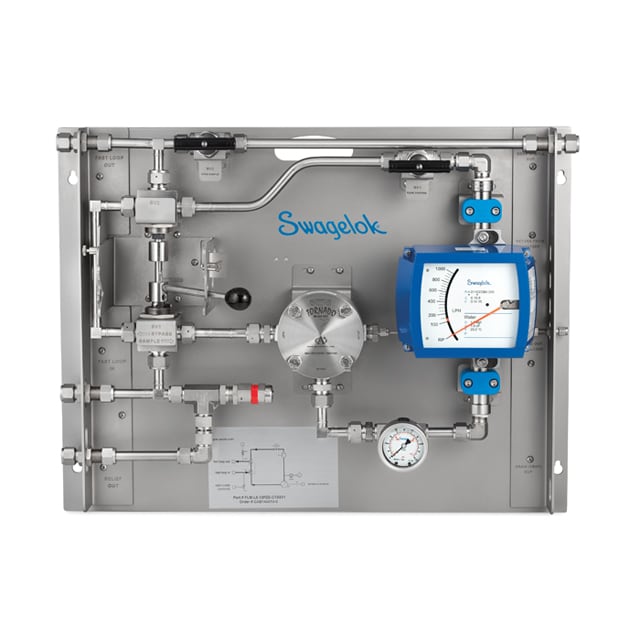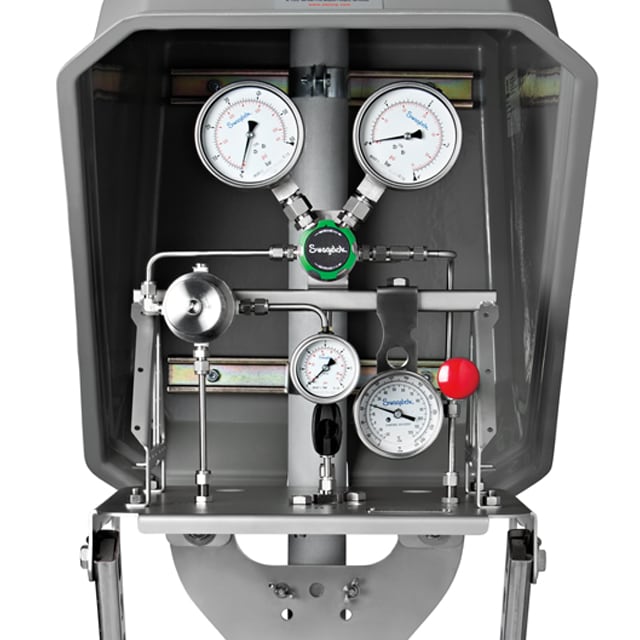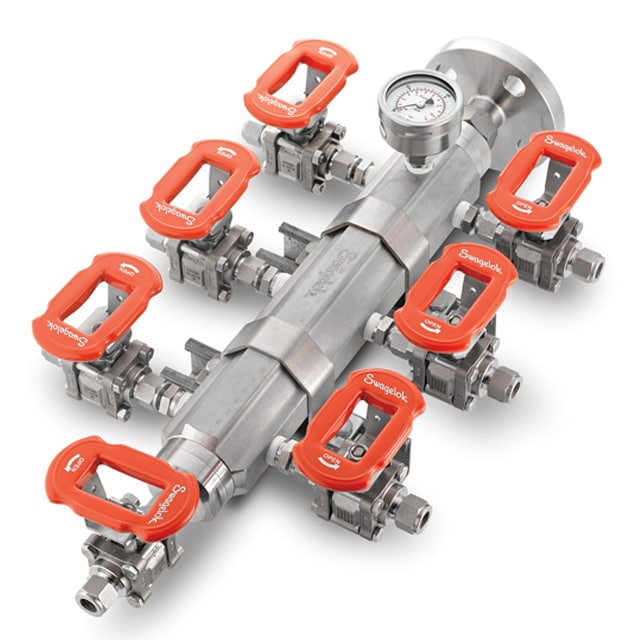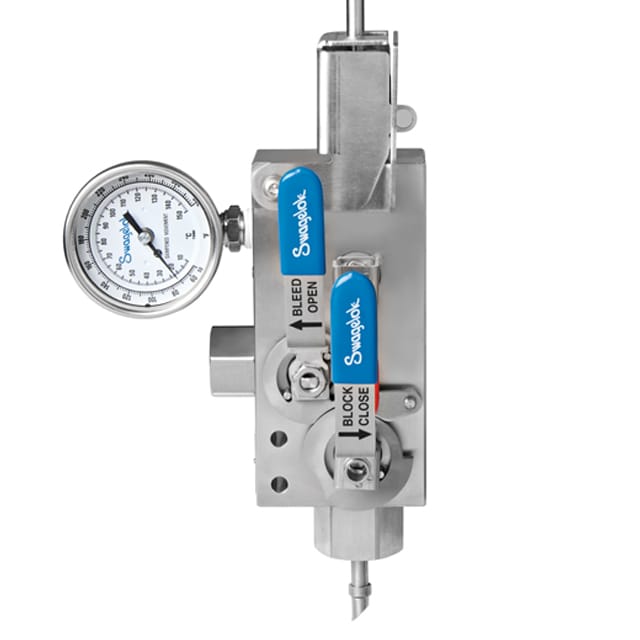Calibration and Switching Modules
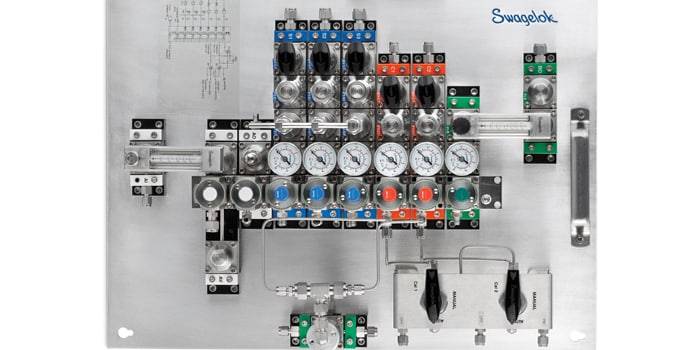
Calibration and Switching Modules
Why Use a Calibration and Switching Module?
To ensure proper function of an online analyzer and to protect the equipment for maximum uptime, all process samples must be conditioned to meet an analyzer's requirements. Conditioning includes verifying that a sample is being inserted into the analyzer at the appropriate pressure, temperature, flow, and filtration level.
Pressure
Supplying the sample fluid at the appropriate pressure is important in both gas and liquid systems. For gas samples, lower pressure will keep the sample away from its dew point and create safer work conditions. In addition, many injection-style analyzers, such as a chromatograph, depend on constant
pressure to ensure a constant injection volume. Liquid systems should maintain a higher pressure to keep a sample away from its bubble point.
Temperature
A conditioning system must control sample temperature. Gases at higher temperature will be less likely to reach their dew point or result in water condensation in the sample system. Liquids should be maintained at a temperature low enough to avoid bubbling, but warm enough to prevent freezing.
Flow
The flow rates set at the sample conditioning system dictate the response time of the entire sample system. A typical analyzer flow rate is far too low to result in an acceptable response to the analyzer. Therefore, bypasses are designed into the sample system at various points. A popular bypass design is a fast loop system, which supplies the analyzer shelter with high flow rates through the transport system. The majority of the fast loop flow returns to the process line, with a lower-flow analyzer line feeding the downstream conditioning system. Alternatively, bypasses can be included in the conditioning system to speed up the flow to the analyzer shelter.

